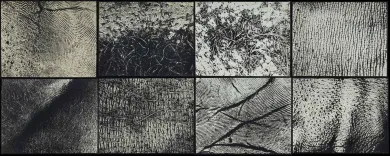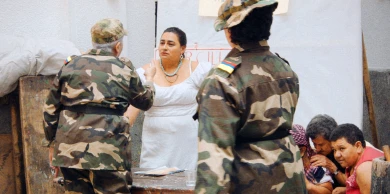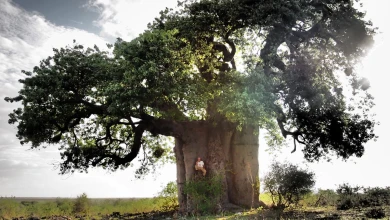Gorka Alda, a musician and composer who lives and works in Paris. He worked closely with Elena Asins between 2010 and 2012, writing the music for her videos in exhibitions such as Elena Asins. Fragments of Memory (Museo Reina Sofía, 2011) and Encuentros tardíos (Late Encounters, Koldo Mitxelena Kulturunea, 2012). He also composed the music for Álvaro Giménez Sarmiento’s documentary Génesis (2014) on the life and work of Elena Asins.
José Luis Alexanco, painter. He participated in the Computing Centre at the Complutense University of Madrid from 1968 to 1973, a period in which he developed a programme generator to topologically transform three-dimensional plastic forms into infinite variations. He subsequently took up painting again, combining it with analytical language. He exhibited his work with Elena Asins on a number of occasions and has exhibited internationally in solo and collective shows.
Sofía Barroso, cultural manager. A gallerist in the 1980s, she worked as a curator and manager at the Museo Español de Arte Contemporáneo de la Fundación Juan March, in Palma de Mallorca, from 1995 to 1997. She has organised ARCO’s Programme of Collectors and was a member of the Board of ARCO Friends from 2000 to 2006. She is currently a member of the Jakober Board of Trustees, from the Zuloaga Foundation, and president of Around Art.
Manuel Borja-Villel, director of Museo Reina Sofía.
Carmen Fernández, head curator of Sculpture and Installation at Museo Reina Sofía. She was part of the team of curators for the exhibition Elena Asins. Fragments of Memory (Museo Reina Sofía, 2011), and is currently the curator in charge of cataloguing the body of work donated to the Museo by the artist.
Ignacio Gómez de Liaño, writer, philosopher and professor of Aesthetics. He has lectured at the Advanced School of Architecture, Madrid, in the Faculty of Political Science and the Faculty of Philosophy at the Complutense University of Madrid, as well as universities in Osaka and Beijing. He is a regular contributor in numerous media, and the author of works that span from poetry and theatre to art, philosophy and personal journals. His noteworthy publications include Athanasius Kircher: Itinerario del éxtasis o las imágenes de un saber universal (Athanasius Kircher: Itinerary of Ecstasy or the Images of Universal Knowledge, 1986), Iluminaciones filosóficas (Philosophical Illuminations, 2001), Sobre el fundamento (On the Foundation, 2002), En la red del tiempo. 1972 1977 (In the Network of Time, 1972-1977, 2013) and Libro de los artistas (The Book of Artists, 2016), his most recent work.
Luis Gordillo, painter. His work, although highly disparate, was followed and commented upon by Asins, with whom he participated in the first collective exhibition New Generation (Galería Edurne, Madrid, 1967). Gordillo’s artistic career spans various decades and has been characterised by ongoing experimentation and changes of register. He has received a number of awards, such as the Velázquez Prize for Plastic Arts (2007), and his works have been exhibited in wide-ranging centres and museums, including Museo Reina Sofía, MACBA and the Fundaçao Gulbenkian.
Mariasun Landa is a writer and honorary professor at the University of the Basque Country, UPV/EHU. Educator, essayist and lecturer, she has just published Puertas y ventanas abiertas (2014), where her writings from the last years are collected. Her publications in children's and youth literature in Euskera stand out, whose stories have been translated into more than fifteen languages. Among other awards she has received the Euskadi Prize (1991) and the National Prize for Children and Youth Literature (2003). For its contribution and projection of Basque culture was awarded the Eusko Ikaskuntza-Laboral Kutxa Award for Humanities, Culture, Arts and Social Sciences 2014.
Javier Maderuelo, art historian and professor. A professor of architecture at the University of Alcalá de Henares. Since 2013 he has been in charge of research in the Lafuente Archive, a comprehensive documentary collection devoted to language and experimental writing in 20th-century art. He currently works as a critic and essayist and is the author of publications which include Medio siglo de arte. Últimas tendencias 1955-2005 (Half a Century of Art. Latest Trends, 1955–2005, [2016]) and is an expert on the work of Elena Asins.
Miguel López-Remiro, cultural manager and art historian. He has worked as deputy curatorial director and deputy director of Documentation at the Guggenheim Museum Bilbao (2006–2010) and as director of Contemporary Art at the University of Navarra (2010–2014). Moreover, he has participated in the research residency programme Visiting Scholar at the University of California, San Diego, and is a graduate of the Getty Leadership Institute, Claremont Graduate University. He works as a professor at the University of Navarra and is the author of the collection Writings on Art: Mark Rothko (2006).
Luis de Pablo, musician and composer. With an Honorary Degree from the Complutense University of Madrid and an academic at the Real Academia de Bellas Artes de San Fernando, he has received Spain’s National Fine Arts Award, the National Award for Music from Spain and the Gold Medal of the Fine Arts Circle, and his work has been performed internationally, for instance at the ISCM festival, held in Hamburg, during the International Music Weeks, Paris, and at the Venice Biennale in 1991.
Carmen Pardo, art historian. A professor of Music History at the University of Girona and with an MA in Sound Art from the University of Barcelona, she has broadly published work on the relationship between contemporary art, sound practices and modes of listening. As an editor and translator of John Cage, Michel Chion and Peter Szendy, she is the author of the books La escucha oblicua: una invitación a John Cage (2001) and Robert Wilson (with Miguel Morey, 2003). She also curated the sound section in the exhibition The Pamplona Encounters 1972: The End of the Party for Experimental Art (Museo Reina Sofía, 2009)
Soledad Sevilla, painter. She participated in the Seminar of the Automatic Generation of Plastic Forms (1969-1971) in the Computing Centre at the Complutense University of Madrid, and exhibited alongside Elena Asins in the collective exhibitions Formas Computables (Computable Forms, Computing Centre, 1969), Signo (Sign, Galería Daniel, Madrid, 1974), Arte español de hoy (Spanish Art Today, 1974), Realismo real (Real Realism, 1983), Arte y Nuevas Tecnologías (Art and New Technologies, Menéndez Pelayo International University, Santander, 1984), Modelos, estructuras, formas. España 1957-79 (Models, Structures, Forms. Spain 1957-79, Centro Andaluz de Arte Contemporáneo, Seville, 2005) and Línea y plano en el arte español contemporáneo (Line and Plane in Contemporary Spanish Art, Galería Machón, Madrid, 2007). She received Spain’s National Award for Plastic Arts in 1993, the Gold Medal for Merit in the Fine Arts in 2007 and the Art and Patronage Award in the category of Best Artist 2014. She has also exhibited internationally, and in 2011 produced the installation Written in the Celestial Bodies, in the Museo Reina Sofía.
Ian Triay, art collector. He was a patron of Elena Asins from her early career to her later works.
Miguel Valero Espada, artist and professor. With a PhD in Logic from the VU University of Amsterdam and a professor at the Complutense University of Madrid in computing, data science and data visualisation, he has conducted research into the relationship between art and computational aesthetics, particularly new forms of expression in digital technology.
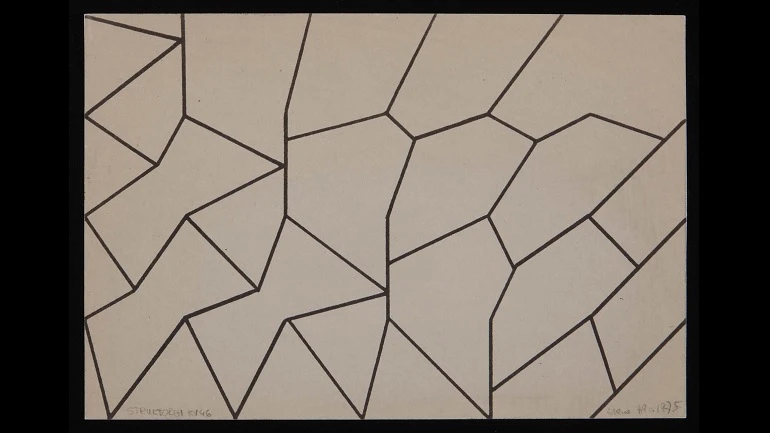
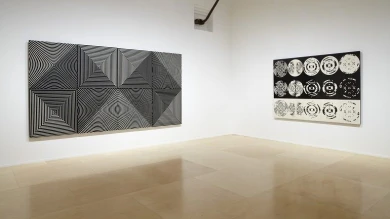

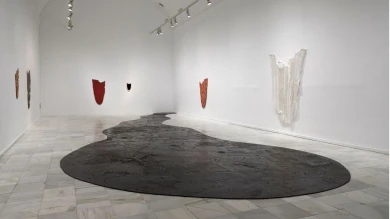
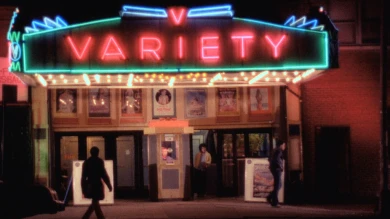
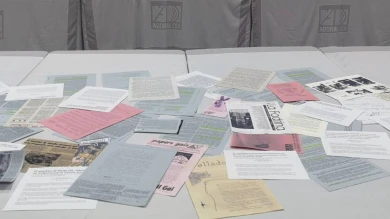
![Miguel Brieva, ilustración de la novela infantil Manuela y los Cakirukos (Reservoir Books, 2022) [izquierda] y Cibeles no conduzcas, 2023 [derecha]. Cortesía del artista](https://recursos.museoreinasofia.es/styles/small_landscape/public/Actividades/ecologias_del_deseo_utopico.jpg.webp)
![Ángel Alonso, Charbon [Carbón], 1964. Museo Reina Sofía](https://recursos.museoreinasofia.es/styles/small_landscape/public/Actividades/perspectivas_ecoambientales.jpg.webp)

